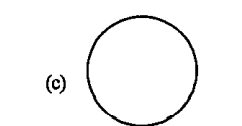Navya observed one slide through the microscope. In it, almost the entire cell space was occupied by vacuole. What would it likely to be?
Animal cell
Amoeba
Mature plant cell
Non-living cell
The correct Answer is:C
To determine what type of cell Navya observed under the microscope, we can analyze the information provided in the question step by step.
1. Observation of the Slide: Navya sees a slide where almost the entire cell space is occupied by a vacuole. This indicates that the vacuole is significantly large compared to other cell components.
2. Understanding Vacuoles: Vacuoles are membrane-bound organelles found in cells. They serve various functions, such as storage of substances, waste disposal, and maintaining turgor pressure in plant cells.
3. Analyzing the Options:
- Animal Cell: In animal cells, vacuoles are generally small and numerous. They primarily function to sequester waste products. Since the question states that the vacuole occupies almost the entire cell space, this option is unlikely.
- Amoeba: Amoeba has contractile vacuoles that help in osmoregulation (maintaining water balance). However, these vacuoles are not large enough to occupy most of the cell space. Thus, this option is also incorrect.
- Mature Plant Cell: Mature plant cells typically have a large central vacuole that can occupy a significant portion of the cell's volume. This vacuole is essential for storing nutrients, waste products, and maintaining turgor pressure, which keeps the plant cell rigid. This option is likely correct.
- Non-living Cell: Non-living cells, such as sclerenchyma, do not have vacuoles that occupy cell space in the same way living cells do. Therefore, this option is incorrect.
4. Conclusion: Based on the analysis, the most likely type of cell that Navya observed, where almost the entire cell space is occupied by a vacuole, is a Mature Plant Cell.
Final Answer:
The cell is likely to be a Mature Plant Cell.
---
- Animal Cell: In animal cells, vacuoles are generally small and numerous. They primarily function to sequester waste products. Since the question states that the vacuole occupies almost the entire cell space, this option is unlikely.
- Amoeba: Amoeba has contractile vacuoles that help in osmoregulation (maintaining water balance). However, these vacuoles are not large enough to occupy most of the cell space. Thus, this option is also incorrect.
- Mature Plant Cell: Mature plant cells typically have a large central vacuole that can occupy a significant portion of the cell's volume. This vacuole is essential for storing nutrients, waste products, and maintaining turgor pressure, which keeps the plant cell rigid. This option is likely correct.
- Non-living Cell: Non-living cells, such as sclerenchyma, do not have vacuoles that occupy cell space in the same way living cells do. Therefore, this option is incorrect.
The cell is likely to be a Mature Plant Cell.
Topper's Solved these Questions
Similar Questions
The throat swab of a patient with a sore throat , hoarseness of voice, and difficulty in breathing was taken. The organism was observed under the microscope and was identified as corynebacterium diphtheriae. The following is an image of the slide.

What is the Nature of the organisms?
View SolutionSuppose you accidentally find an old preserved permanent slide without a label. In your effort to identify it, you place the slide under microscope and observe the following features: Unicellular, no well-defined nucleus and multiple cilia. What would you identify it as? To which kingdom does it belong?
View Solution
Knowledge Check
A smear of blood from a healthy individual is stained with a nuclear stain called hematoxylin and then observed under a light microscope. Which of the following cell type would be highest in number ?
AneutrophilsBIymphocytesCeosinophilsDmonocytesPriyanka observed the phases of the Moon. She saw a full moon in the sky on 19th jan 2009. After 15 days, she new moon. What would be the likely shape of Moon on 18th Feb 2009?
A B
B C
C D
D
You are observing a plant cell under a powerful microscope. Which of these organelles present within the cell would be the largest of all?
ANucleusBChloroplastCVacuoleDMitochondria
Tarun observed a slide of white blood cells under microscope. His teacher asked him to draw the diagram. Select the diagram which should be drawn by Taeun.
View Solution(a) Two slides were observed under the microscope for spot test as shown below. Given the correct identification of the two spots.

(b) Give one characteristic feature of each spot.
View SolutionThe diameter of molecules of a gas, considered as sphere, is about 3x×10–10 m. Assume the entire volume occupied by the gas to be divided into cubic cells with one molecule per cell. Estimate the distance between molecules in terms of molecular diameter under standard conditions.
View SolutionIn a practical laboratory, a student while observing the slide of tissue with the help of a microscope, found a bunch of cylindrical shaped cells having interconnections belong to the category of
View SolutionA group of PUC students are appearing for a biology practical examination. One of the practical problems is to identify the slide focused under a microscope. When they observe, they see a structure more or less spherical having an outer most layer which is green in colour and in the middle many of parenchyma cells and a number of skull-shaped bundles are arranged irregularly all around. Help them in identifying the structure properly.
View Solution
